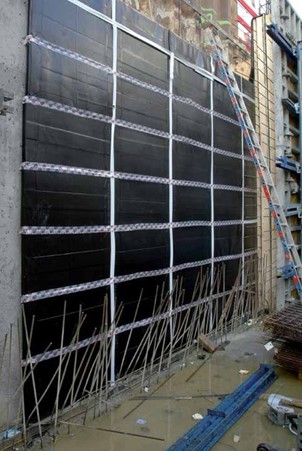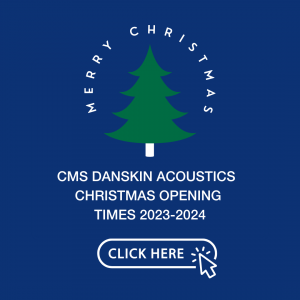In some cases it suffices to install a vertical partition at the exterior structural components in order to reduce vibrations. Vertical partitions are often installed between existing and to- be-constructed buildings.
In these applications there are diverse requirements of the elastomer. The more dynamically soft the material, the better the reduction of the vibration. However, it still has to be able to bear the loads that occur. These loads, which may be the result of earth or concreting pressure, may be up to 120 kN/ m2 and in exceptional cases even considerably higher.
Generally a plate-shaped, soft elastomer from the Regupol® group is used for this type of application. Even though they have a constant load-bearing capacity of up to 120 kN/m2, Regupol® elastomers still have very low dynamic rigidity.
Moreover, the material is insensitive to moisture and very quick to install thanks to the installation aids.
The material is available in plates of 1,000 x 500 x 50 mm as standard to ensure good handling. Depending on the requirements for the vertical isolation, the material can also be installed in double layers with 100 mm thickness. Special thicknesses (e.g. 25 mm) are available upon request.
The vertical isolation can be glued onto the partition wall. To this end the construction site must offer the usual gluing conditions such as a dry and dust-free surface.
Alternatively, the material can be nailed or plugged onto the wall with mounting aids, regardless of the weather conditions.
Prior to backfilling the site, the elastomer should be protected against sediments and sharp rocks by covering it with a geotextile.



